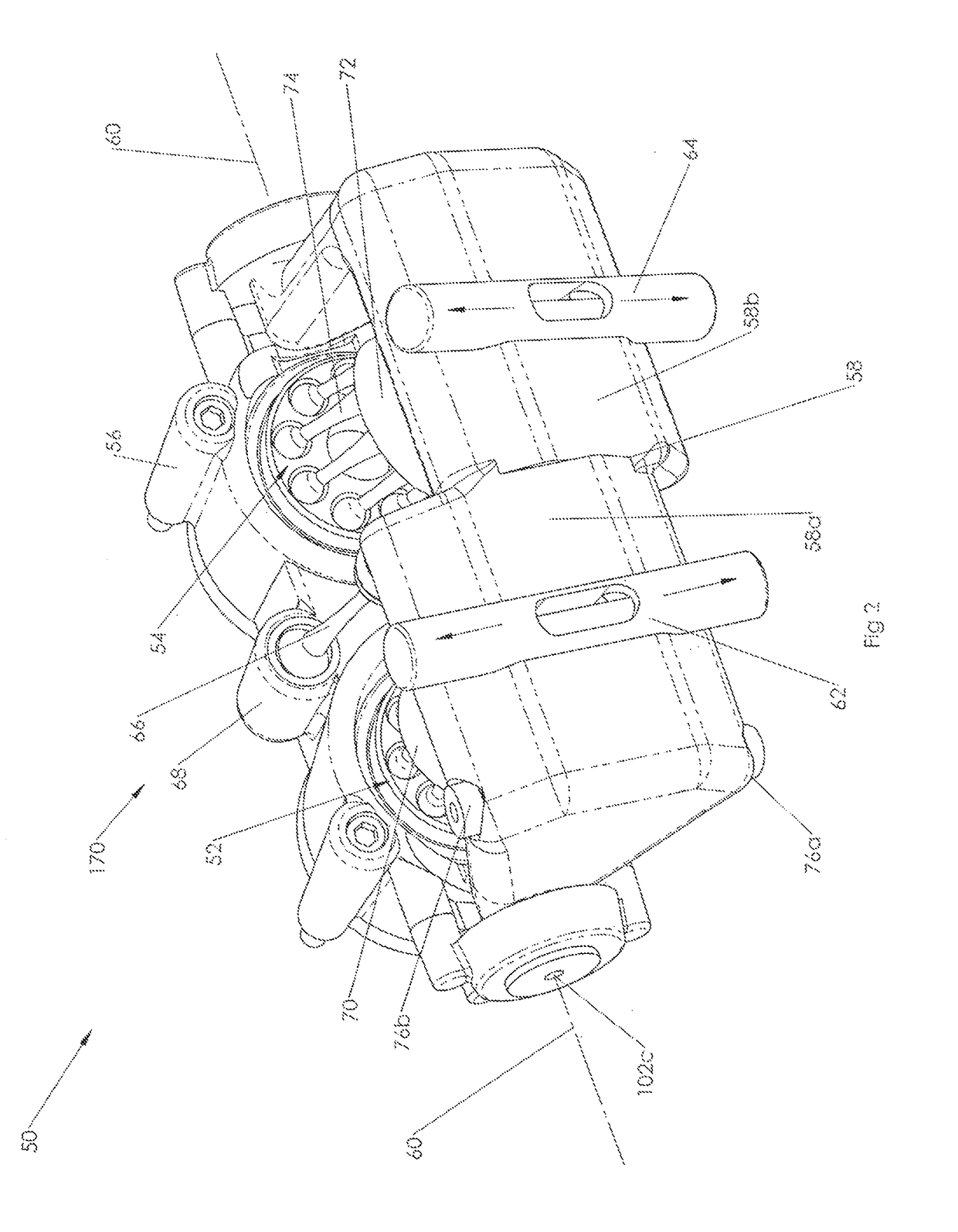Hydrostatic variator
a technology of variator and water pump, applied in the direction of gearing control, gearing element, gearing, etc., can solve the problems of reducing the efficiency of the hydraulic drive system, reducing the efficiency of the system, and requiring multiple servos, so as to improve the efficiency
- Summary
- Abstract
- Description
- Claims
- Application Information
AI Technical Summary
Benefits of technology
Problems solved by technology
Method used
Image
Examples
Embodiment Construction
[0030]As is commonly used in the art, herein “system size” refers to the sum of the pump and motor displacements in a hydrostatic variator.
[0031]FIG. 2 illustrates a perspective view of a hydrostatic variator or hydraulic module 50 according to an embodiment of the invention. Hydrostatic variator 50 comprises a housing 56 that supports first bent axis piston drive unit 52, shown on the left hand side of the figure and second bent axis piston drive unit 54 shown on the right hand side of the figure. Housing 56 supports a distal end of each of the bent axis piston drive units 52, 54 and allows each of the bent axis piston drive units 52, 54 to rotate relative to the housing 56. Housing 56 is manufactured such that output shafts (not shown in the figure) of each of the bent axis piston drive units 52, 54 are parallel to one another and are generally perpendicular to the housing. Each of the bent axis piston drive units 52, 54 includes at least two pistons 74 (in this example, nine pist...
PUM
 Login to View More
Login to View More Abstract
Description
Claims
Application Information
 Login to View More
Login to View More - R&D
- Intellectual Property
- Life Sciences
- Materials
- Tech Scout
- Unparalleled Data Quality
- Higher Quality Content
- 60% Fewer Hallucinations
Browse by: Latest US Patents, China's latest patents, Technical Efficacy Thesaurus, Application Domain, Technology Topic, Popular Technical Reports.
© 2025 PatSnap. All rights reserved.Legal|Privacy policy|Modern Slavery Act Transparency Statement|Sitemap|About US| Contact US: help@patsnap.com



